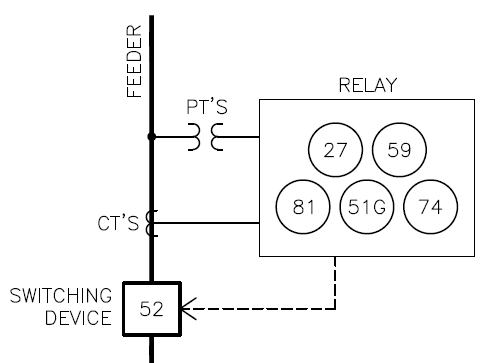Intro to Relays #2 - ANSI/IEEE Relay Numbers
Protective relays are a complex and advanced area of electrical engineering, often seen as intimidating. However, they don’t have to be! This three-part series is designed to introduce the basics of relay systems to non-engineers in the solar and energy storage industries.
**Intro to Relays #1 – What Are Relays, CTs, and PTs?**
**Intro to Relays #2 – ANSI/IEEE Relay Device Numbers (below on this page)**
**Intro to Relays #3 – What Does SEL Stand For?**
**Relay Numbers: The Language of Protection**
Protective relays use standard device numbers to describe their functions, making communication more efficient and precise. Instead of using lengthy descriptions, engineers rely on these numbers, which are standardized in the ANSI/IEEE C37.2 document.
**Why Use Numbers Instead of Words?**
1. **Efficiency**: Using numbers saves time when creating wiring diagrams or discussing system behavior. For example, saying “59N†is much quicker than explaining “Over Voltage on the Neutral.â€
2. **Standardization**: These numbers ensure everyone involved—engineers, vendors, installers, and utilities—understands the function without confusion.
3. **Clarity on Drawings**: With multiple functions, using numbers keeps drawings clean and easy to read. Imagine describing all the functions of a single relay in words versus just listing the numbers.

**Attention Engineers!**
If you enjoy technical content like this, you might be a perfect fit for Pure Power. Our team of 80 engineers has designed over 2,000 C&I and utility-scale solar projects. Working alongside such experienced professionals can help you grow your career significantly.
Check out our open positions today.
**What Numbers Are Used in Solar?**
Here are the most common relay functions used in PV and energy storage systems:
| # | Name | Description |
|-----|----------------------|-------------|
| 25 | Synchronizing Clock | Compares voltage, frequency, and phase angle between the utility and solar circuit. Allows parallel connection if matched. |
| 27 | Undervoltage | Triggers when voltage drops below a set threshold. |
| 32 | Directional Power | Detects reverse power flow beyond a set limit. |
| 49 | Transformer Thermal | Activates when winding temperature exceeds a safe level. |
| 50 | Instantaneous Overcurrent | Trips immediately when current exceeds a defined value. |
| 51 | Inverse-Time Overcurrent | Trips after a set time if current remains above a threshold. |
| 52 | Circuit Breaker | Opens a circuit; 52R also allows reclosing. |
| 59 | Overvoltage | Triggers when voltage goes above a set value. |
| 74 | Alarm | Triggers visual, audible, or data alarms. |
| 79 | AC Reclosing | Controls reclosing or locking out of an AC interrupter. |
| 81 | Frequency | Trips when frequency is outside acceptable limits. |
| 86 | Lockout | Prevents operation until manually reset. |
| 87 | Differential Protective | Trips when there's a difference in measured currents. |
| 89 | Line Switch | A disconnect switch with additional accessories like shunt trips. |
**Letters After Numbers: Additional Details**
Sometimes, letters are added to the numbers to provide more context:
| # | Name | Description |
|-----|------------|-------------|
| R | Reclosing | Indicates the relay can reclose after tripping. Example: 52R = Circuit breaker that opens and recloses. |
| P | Phase | Usually not shown since it defaults to phase. |
| N | Neutral | Indicates the function applies to the neutral conductor. |
| G | Ground | Indicates the function applies to the ground conductor. |
**Setpoints: The Critical Details**
Each relay function requires specific setpoints—minimum and maximum values determined by engineers. These values vary per project and are essential for proper system operation.
**Conclusion**
At a high level, relay numbering seems simple, but the details quickly become complex. While developers and project managers don’t need to know every detail, having expert engineers like those at Pure Power ensures everything works smoothly. If you need help with your project’s relay system, reach out today—we’re here to help.
Guangdong Heidler Technology Co., Ltd , https://www.hyhemit.com